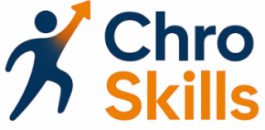
The Role of a Chief Human Resources Officer
Understanding the Responsibilities of HR Leadership
The Chief Human Resources Officer (CHRO) plays a pivotal role in shaping an organization’s work environment by overseeing all aspects of human resources management and ensuring compliance with legal and ethical standards. A crucial part of a CHRO's job is managing the nuanced intersection between an employee’s medical condition and their workplace responsibilities. This involves dealing with requests for sick leave, handling work notes, and ensuring that employees are medically cleared to return work after an illness or injury. CHROs must be adept at reviewing the various forms and templates that accompany these processes. This includes understanding a doctor note that verifies an employee's medical condition, which can often come in the form of a pdf from a physician or an urgent care provider. Such notes must comply with organizational and legal standards, making it vital for HR leaders to navigate these intricacies with efficiency and care. Moreover, a CHRO must ensure that both the employer and employees adhere to policies regarding health-related absences. They should be proactive in creating note templates and work forms that facilitate smooth communication between the doctors, employees, and the employers. This balance requires a deep knowledge of employment law and ethical considerations, which you can learn more about here. In fulfilling these responsibilities, CHROs enhance workplace productivity by managing the delicate dynamics between workforce readiness and health. This role not only demands expertise in HR policies and systems but also a compassionate understanding of employee needs. By fostering a supportive work environment, they play a crucial role in maintaining employee health and, in turn, organizational success.Key Skills for Managing Employee Health
Essential Competencies for Promoting Employee Well-being
Managing employee health effectively requires a comprehensive skill set, and a Chief Human Resources Officer (CHRO) must be adept in various areas. These skills ensure that the organization can handle health-related challenges while supporting employee recovery and return to work.When navigating the complexities of workforce health, a CHRO should consider:
- Understanding Medical Documentation: Analyzing work notes, doctor notes, and physician forms is critical. A CHRO must ensure these documents include all necessary information, such as medical conditions and expected return work dates.
- Collaboration with Healthcare Professionals: Coordinating with doctors and urgent care providers helps address illnesses, injuries, and sick leaves accurately, ensuring that employers and employees both adhere to medical recommendations.
- Developing Clear Processes: Facilitating seamless submission of doctor notes and form templates (in formats like PDF) aids in managing requests for leave and eventual employee release returns.
- Free Resources Management: Utilizing free doctor notes and templates ensures cost-effective operations without compromising on the documentation quality needed by employers.
Understanding not only the physical aspects but also the legal and ethical components of managing employee health can further prepare a CHRO to handle these responsibilities. Moreover, leveraging technology can streamline these processes, paving the way for a robust support system.
For more insights, one can explore further navigating legal and ethical HR considerations.
Navigating Legal and Ethical Considerations
Balancing Legal and Ethical Aspects in Employee Health Management
Managing employee health is not just about ensuring their well-being but also involves understanding the legal and ethical considerations that come into play. One significant aspect is navigating the complexities of obtaining a return to work doctor's note without infringing on privacy rights or employment laws.
A key part of this process involves knowing how to appropriately request a doctor note from an employee who has taken sick leave due to an illness injury or other medical condition. Employers must take care to ensure that requests for such documentation are handled sensitively and comply with legal requirements.
It’s critical to familiarize yourself with the guidelines surrounding medical documentation, including how to handle a physician release form or a work note that outlines an employee’s capability to work post-illness or injury. These notes might come in different forms, such as a release return template, and understanding their specificities can help HR professionals manage these scenarios effectively.
Employers must also navigate the potential pitfalls related to privacy. Keeping any doctor notes or medical forms confidential is paramount to preserving employee trust and adhering to privacy laws. Utilizing templates and forms from reputable sources can also make compliance easier. For example, using a free doctor’s note template that meets legal standards can prevent unnecessary issues.
An expert Chief Human Resources Officer (CHRO) will also be adept at implementing fair and legally compliant policies for obtaining and verifying doctors notes. This enhances the overall health management strategies within an organization, ensuring both employee well-being and organizational integrity. For more insights into mastering policy development skills for HR leaders, check out this comprehensive guide.
Effective Communication Strategies
Enhancing Employee Interaction
Effective communication plays a pivotal role in the responsibilities of a Chief Human Resources Officer, especially when managing employee health and the transition back to work. It's not just about relaying information; it involves crafting a message that resonates with both employees and employers, ensuring a clear understanding of procedures and expectations surrounding medical forms and notes. When requesting a return to work note from a doctor, it's imperative to ensure that the communication is clear and concise. This includes articulating the necessity of such notes, whether it's a template free note from an urgent care facility or a physician's detailed medical release. The objective is to streamline the process for obtaining a doctor's note or a work note, which confirms an employee's readiness to return after an illness or injury.Crafting Comprehensive Policies
To facilitate seamless communication, HR leaders can develop comprehensive policies that employers and employees can easily understand. This involves using a note template or pdf forms that are readily accessible to all parties. By providing these resources, including the option for free doctor note templates, HR leaders can help employees meet their responsibilities in a stress-free manner. Moreover, it's essential to address the importance of privacy when handling health-related information. While the focus is on obtaining the necessary work forms, maintaining confidentiality about an employee's medical condition is fundamental. This approach not only supports compliance with legal standards but also fosters a trust-filled environment.Encouraging Two-way Dialogue
Communication shouldn't be limited to top-down directives. Encouraging a two-way dialogue is beneficial, allowing employees to express any concerns they may have regarding their return to work. This can involve discussing the impacts of a sick leave or sharing feedback on the doctor note policies. Such dialogue ensures that both parties are on the same page, promoting a healthy workplace culture. By integrating feedback, HR professionals can continually refine their strategies, making them more effective over time. In conclusion, crafting an effective communication strategy is essential for managing employee health and return work protocols. By prioritizing clarity, understanding, and privacy, HR leaders can support employees in their return, ensuring a smooth transition that upholds both organizational and employee needs.Building a Supportive Work Environment
Creating a Workplace that Encourages Employee Health
Managing the dynamics of a human resources department requires the Chief Human Resources Officer (CHRO) to focus on fostering a supportive work environment. This involves implementing strategies that enhance employee health and well-being. In today's fast-paced work world, the need for a healthy work-life balance becomes evident when addressing workplace issues such as a return to work following illness or injury. Employees often provide a doctor’s note or release form from a physician as part of their transition back to work. Employers should offer flexible policies and free templates for these instances, ensuring ease of return work procedures. With a clear template, employees can submit a doctor’s note or medical form without added stress. To build a conducive environment, CHROs should:- Develop Health-Friendly Policies: Encourage practices like sick leave or urgent care visits without negative repercussions. This allows employees to fully recover before returning, supported by a physician release form if necessary.
- Promote Open Communication: Establish direct lines for employees to discuss their needs, whether it's regarding health concerns or urgent medical conditions requiring time off.
- Supportive Infrastructure: Equip the workplace with resources that assist in the transition, like accessible note templates or guidance for acquiring doctors notes, thus minimizing bureaucratic barriers.







